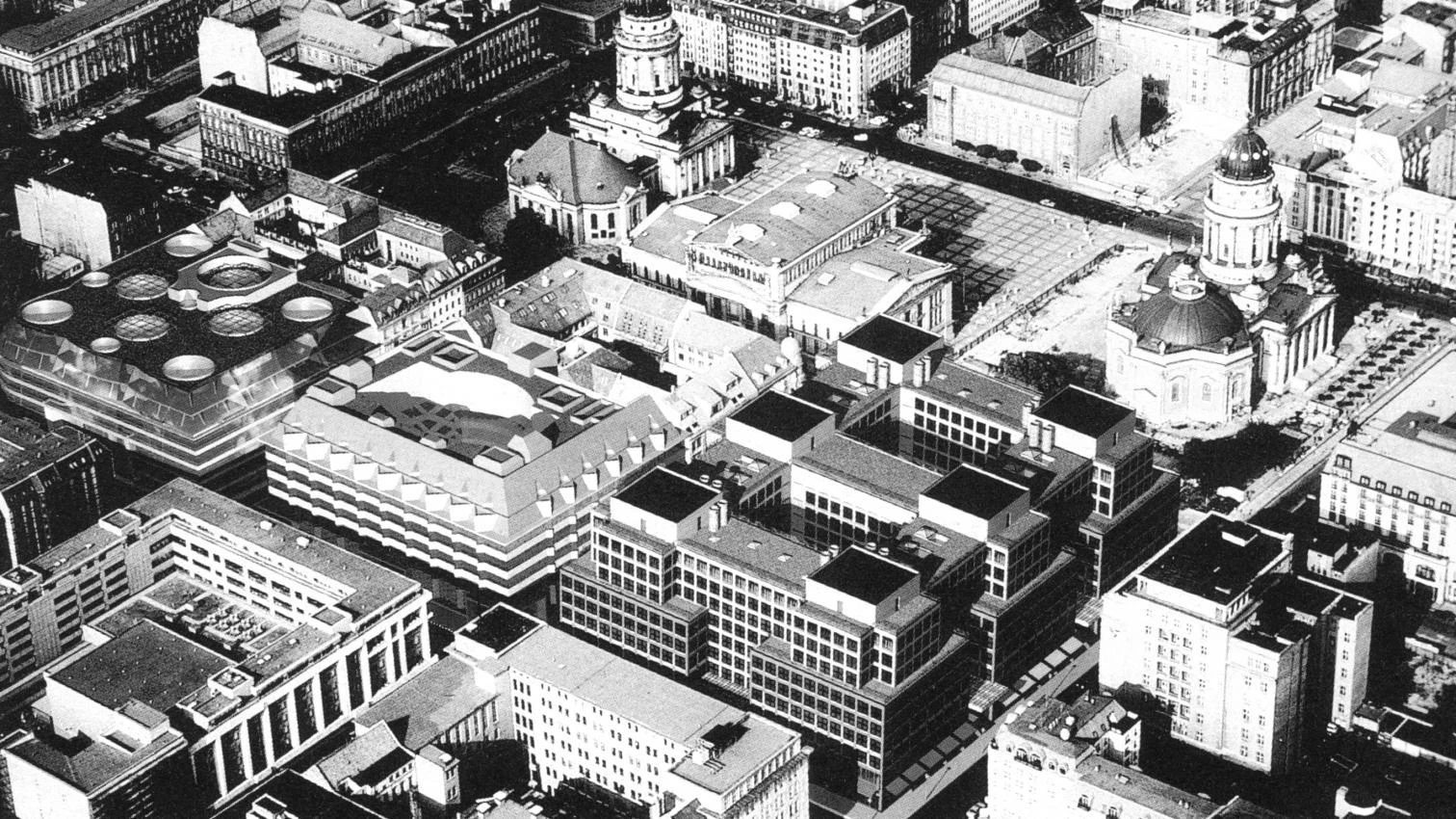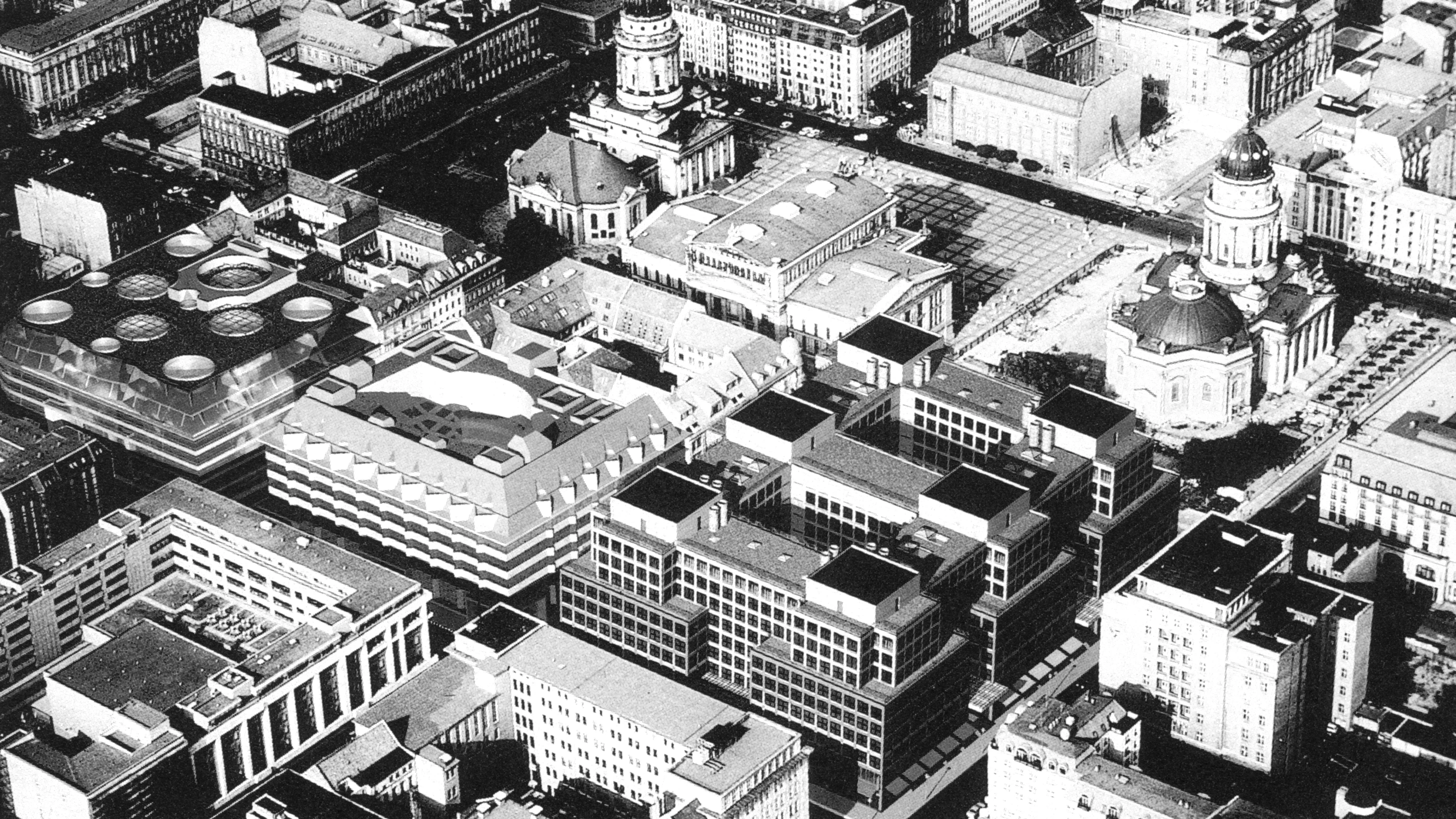
Jean Nouvel, Leoh Ming Pei, Oswald Mathias Ungers, blocks between Friedrichstrasse and Gendarmenmarkt
Berlin's city center has suffered irreparable damage. There is no comparison with any other European metropolis. This urban agglomeration of some 50 kilometers in diameter, inhabited by just over 3.5 million people, has a kind of crater in the center. In what was once one of the most compact multifunctional areas in history now stretches something that looks more like a meadow inhabited by modern dinosaurs than an urban center. Both the elements it contains and those it misses contribute to produce the same sense of emptiness: huge roads and public areas that seem to float in their very lack of spatial definition. There is no way out of this situation: the coming decades can do nothing but limit the extent of the damage.
This cannot be considered an accident. The destructions of war are well known history, the history of Berlin. But the devastation that can be seen today is not merely a consequence of war. What exists is worse than what does not exist. And what exists is not exactly the result of barbarism isolated from the rest of the world of architecture and urban planning. The center of old Berlin, between Potsdamer Platz and Alexanderplatz, is, along with Rotterdam, one of the most extraordinary examples of modern urbanism. Only the conditions under the communist regime - the centralized control of land, planning and resources, and the absolute absence of influence on the part of any owner - made it possible for the goals of modernity to be realized in such a pure form that the city's urban development was...[+]






